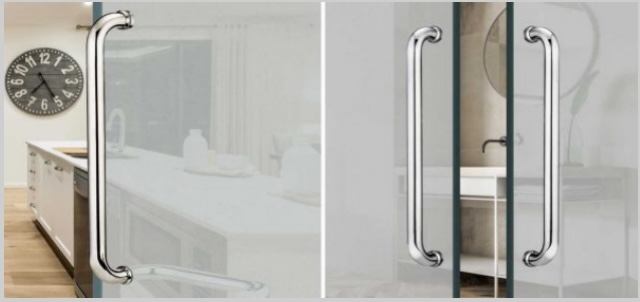In the world of interior design, the smallest details can make a significant impact on the overall aesthetic and functionality of a space. One such detail that has undergone a remarkable transformation is the glass door handle. From its humble beginnings as a simple mechanism for opening and closing doors, the modern glass door handle has evolved into a design element that merges functionality with artistic expression. This essay, SATEER brings us to explore the evolution and significance of modern glass door handles, highlighting their innovative designs, materials, and their impact on contemporary architecture and interior design.
The Shift towards Modern Design:
As architectural styles shifted towards minimalism and clean lines, the need for door handles that seamlessly integrated with modern spaces became apparent. Traditional door handles, with their ornate designs and intricate details, no longer fit the sleek and streamlined aesthetics of contemporary interiors. This shift in design philosophy paved the way for the emergence of modern glass door handles.
Sleek and Minimalist Designs:
Modern glass door handles embrace simplicity and minimalism. These handles feature clean lines, geometric shapes, and a focus on functionality. Lever handles are a popular choice, often made of high-quality metals such as stainless steel or brushed nickel. Their ergonomic design ensures a comfortable grip while adding a touch of elegance to the glass door.
Integration and Recessed Handles:
One of the most striking innovations in modern glass door handles is the integration of the handle directly into the glass itself. Integrated handles create a seamless and cohesive look, where a portion of the glass is cut and shaped to serve as the handle. Recessed handles take this concept further by embedding the handle within the glass door surface. These designs provide a sleek, minimalist appearance and eliminate any protrusions that might disrupt the overall aesthetics.
Materials and Finishes:
Modern glass door handles come in a wide range of materials and finishes, allowing for customization and personalization. While metals like chrome, brass, and aluminum are popular choices, glass handles have also gained traction. Glass handles can be clear or frosted, adding a touch of sophistication to the door. Additionally, finishes such as matte, brushed, or polished further enhance the overall look and feel.
Functionality and Practicality:
Beyond their visual appeal, modern glass door handles prioritize functionality and practicality. Manufacturers have focused on developing mechanisms that provide smooth operation, durability, and ease of installation. These handles are designed to withstand daily use while ensuring a secure and comfortable grip. Modern locking systems have also been integrated into glass door handles, enhancing both convenience and security.
Impact on Architecture and Interior Design:
The introduction of modern glass door handles has had a profound impact on contemporary architecture and interior design. Their sleek designs and minimalist approach align with the aesthetics of modern spaces, including residential homes, commercial buildings, and offices. Glass door handles contribute to an open and spacious feel, promoting the flow of natural light and creating a sense of transparency.
Conclusion:
Currently, modern glass door handle represents a harmonious blend of form and function. It has evolved from a purely utilitarian object to a design element that embodies elegance and simplicity. By embracing minimalism, integrating with the glass surface, and utilizing a range of materials and finishes, SATEER modern glass door handles have transformed the way we interact with doors while enhancing the overall aesthetic of our living and working spaces. Their influence on contemporary architecture and interior design continues to grow, emphasizing the importance of paying attention to even the smallest details in creating harmonious and visually appealing environments.
